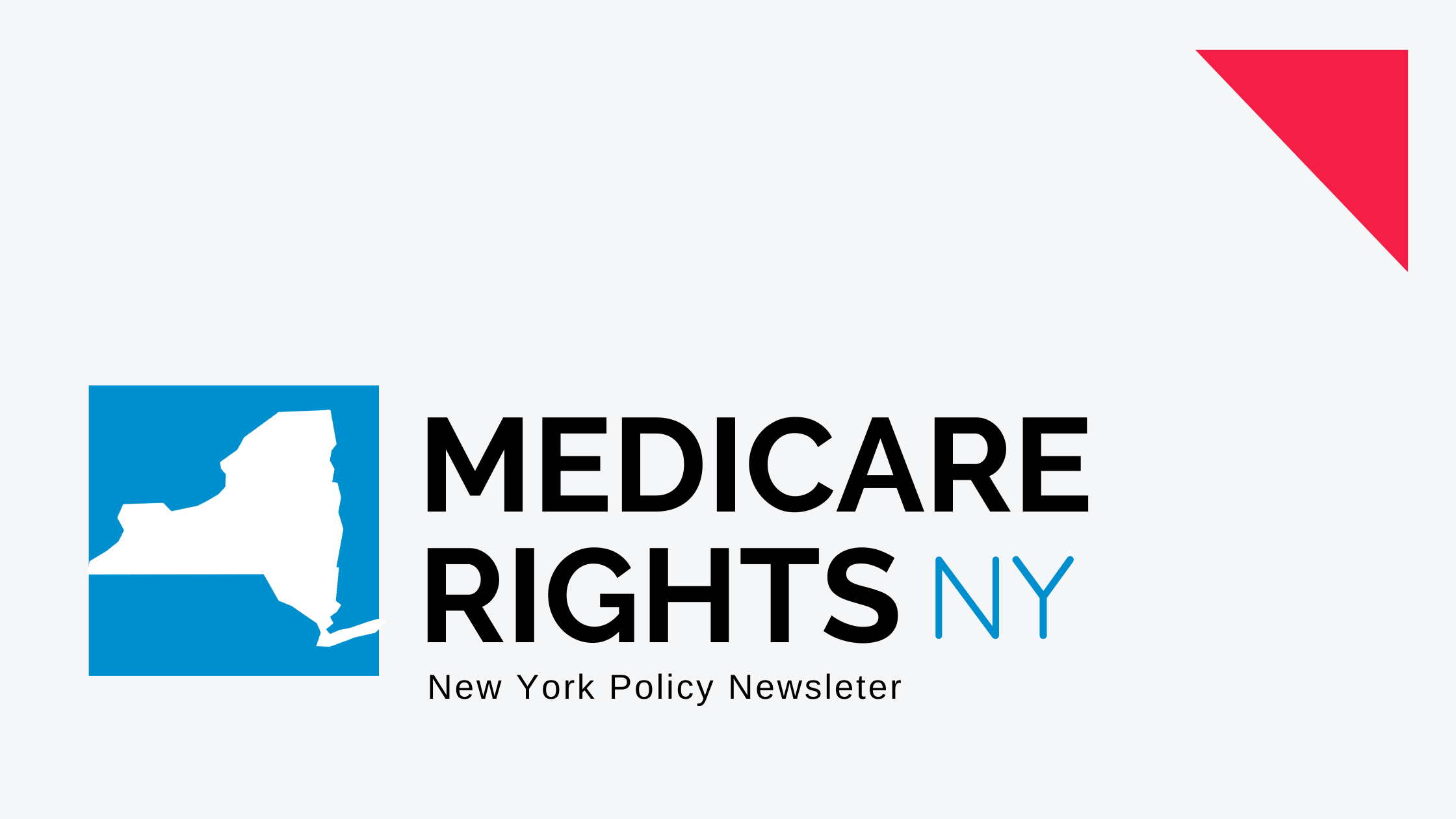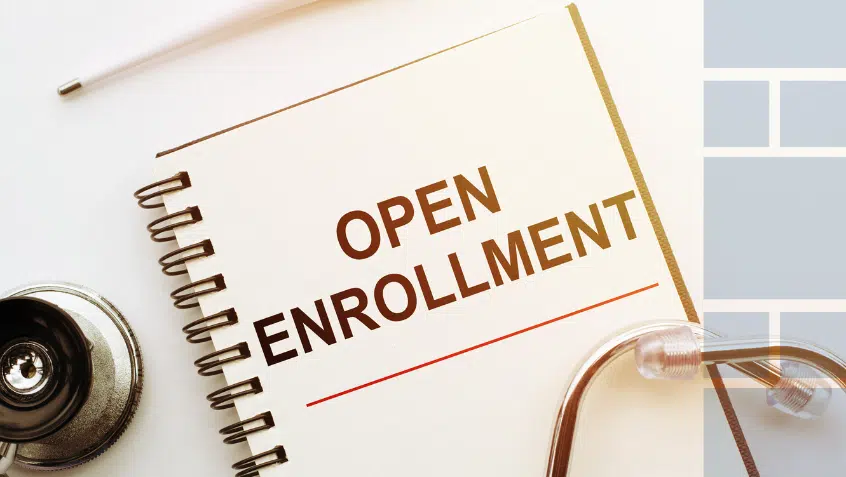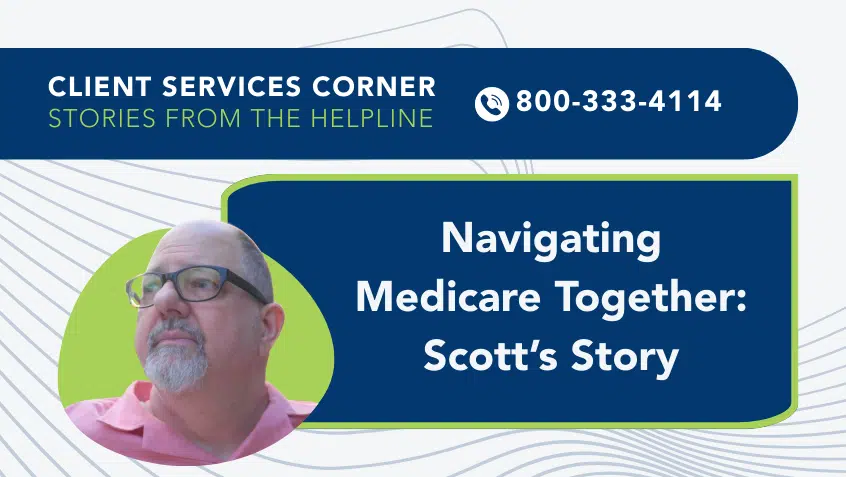Join Us Live for a Discussion on Medicare, Democracy, and the Future of Health Care

Medicare Rights Advocacy
Governor Hochul releases New York State budget
Governor Hochul recently released the 2024 NYS Executive Budget. Medicare Rights is pleased to report that the Managed Care Consumer Assistance Program (MCCAP) and the Community Health Advocates (CHA) program received level funding. Medicare Rights also supports proposals to increase funding for the New York State of Health (NYSoH) marketplace and to expand the Medicaid Buy-In for Working People with Disabilities (MBI-WPD).
Last year, we applauded the Governor for proposing repeal of the Medicaid asset test for older adults and people with disabilities, but that provision fell out during budget negotiations. We urge that this asset test be eliminated to promote eligibility equity for older adults and people with disabilities. If not eliminated, we recommend increasing the asset limit this year from 150% to 600% of the federal poverty level. Short of full repeal, increasing the asset limit will make access to health care more equitable.
Read Medicare Right’s full budget testimony.
Medicare Rights comments on CMS 2024 proposed rule
Each year, the Centers for Medicare & Medicaid Services (CMS) recommends policy changes to Medicare Advantage (MA) and Part D plans. Recently, the Medicare Rights Center submitted comments on the proposed rule for 2024.
Medicare Rights appreciates and supports many of the outlined updates. In particular, we applaud proposals to improve access to substance use disorder and mental health care. We also welcome the agency’s efforts to curb prior authorization, inappropriate coverage denials, and predatory marketing. These harmful practices routinely interfere with access to care and beneficiary decision-making. We encourage CMS to further strengthen enrollee protections in future rulemaking and guidance.
We urge CMS to provide more robust oversight of MA and Part D plans to ensure that they are meeting their contractual and civic duties to beneficiaries, taxpayers, and Medicare. Our comments also discuss several issues left unaddressed by CMS, including the overly complex MA and Part D appeals processes, the cluttered MA Plan choice landscape, and the marketing of supplemental benefits.
Read Medicare Rights’ comments.
For more information, please visit Medicare Rights’ blog.
New York State and Federal Government Updates
New Part B Special Enrollment Periods implemented in 2023
Beginning this year, CMS implemented new Special Enrollment Periods (SEPs) that allow qualifying individuals to enroll in Medicare Part B without a late enrollment penalty or a gap in coverage. These new SEPs will help people enroll in Part B who missed their Initial Enrollment Period (IEP) because of a government-declared disaster or emergency or due to misinformation from an employer or health plan, as well as people leaving incarceration and individuals whose Medicaid coverage is terminated.
These SEPs were key features of the Beneficiary Enrollment Notification and Eligibility Simplification (BENES) Act, which Medicare Rights championed. Included in these changes is the authority for Medicare to establish Part B SEPs for other “exceptional circumstances.”
For more information, please visit Medicare Interactive.
Report spotlights underuse of Medicare Savings Programs
AARP recently released a report outlining Medicare Savings Program (MSP) underutilization and pathways for states to increase enrollment. The report highlights the value of MSPs as well as the struggle individuals may face learning about, qualifying for, and enrolling in the programs.
MSPs pay the monthly Medicare Part B premium on behalf of people with limited resources and may help with cost-sharing as well. The eligibility criteria are very strict in many states, with low income and asset limits. But even for those who qualify, the MSP enrollment process is notoriously complex. This complexity likely contributes to widespread under-enrollment; an estimated 40% of those who are eligible—2.5 million people—are not enrolled.
AARP describes issues with eligibility as well as barriers to enrollment. The report then outlines state and federal efforts to improve awareness, access, and enrollment.
For more information, please visit Medicare Rights’ blog.
Show Comments
We welcome thoughtful, respectful discussion on our website. To maintain a safe and constructive environment, comments that include profanity or violent, threatening language will be hidden. We may ban commentors who repeatedly cross these guidelines.
Help Us Protect & Strengthen Medicare
Donate today and make a lasting impact
More than 67 million people rely on Medicare—but many still face barriers to the care they need. With your support, we provide free, unbiased help to people navigating Medicare and work across the country with federal and state advocates to protect Medicare’s future and address the needs of those it serves.
The Latest
Most Read
Affordable Health Care in Jeopardy for Millions
Analysis Flags Potential Medicare Advantage Access Issues for Mental Health Care
Medicare Advantage Enrollees Have Until March 31 to Make Certain Coverage Changes
Rural Health Fund Awards Cannot Compensate for Enormous Medicaid Cuts that Threaten Home Care
Add Medicare to Your Inbox
Sign up to receive Medicare news, policy developments, and other useful updates from the Medicare Rights.
View this profile on InstagramMedicare Rights Center (@medicarerights) • Instagram photos and videos









